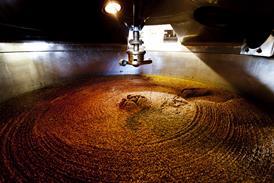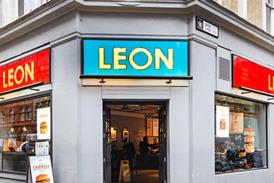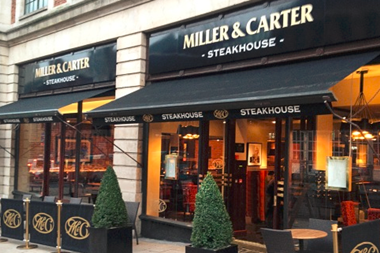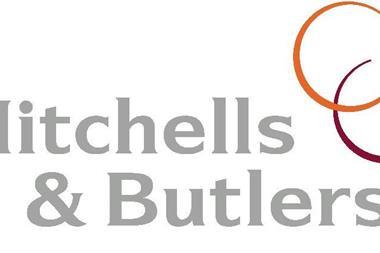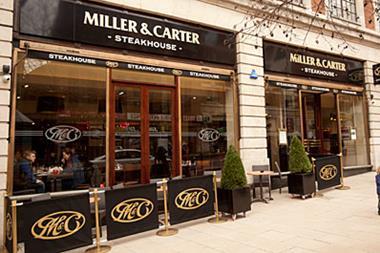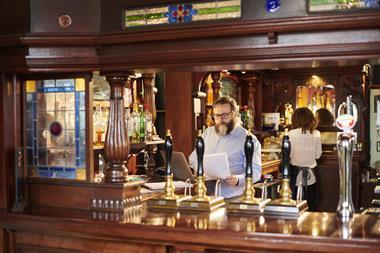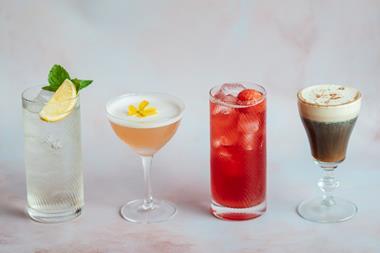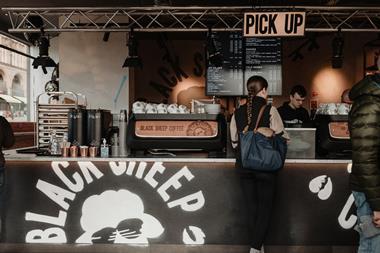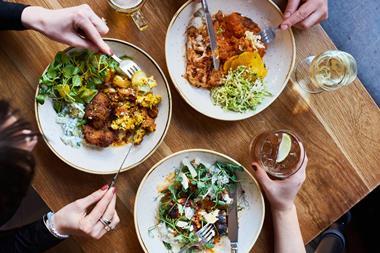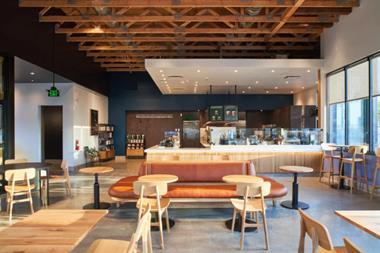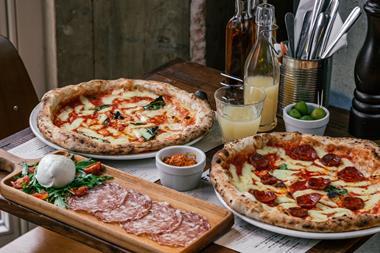Following yesterday’s full-year results announcement, MCA talks to Mitchells & Butlers chief executive Phil Urban. He discusses performance across its suite of brands, and why he sees joint ventures as the smartest form of M&A. He also says developing a virtual brand is on the company’s road map, talks about the rollout of order at table technology and the company’s work on flexing price during busy periods.
M&B has set out its ambition to develop new concepts, and Urban said that while there were still no plans to expand Chicken Society and Son of Steak beyond their debut sites, work was underway to find new brands for growth, adding: “There is certainly growth left in Miller & Carter but it’s not going to be forever so we have to find a second string to that bow.”
So, could joint ventures prove to be the solution? Urban said M&B’s partnership with Ego Restaurants, announced in August, had been opportunistic but also represented his preferred approach to M&A.
He said: “At some managed businesses, they would be aghast at handing over some of their sites to a tenanted operation but I’m not wired like that. We will inevitably have sites where the offer no longer fits perfectly in the local market or has got a bit stale and perhaps we haven’t got something that perfectly suits it but it works well for Ego.
“I’m often asked if we are going to get into M&A and my answer is that while it’s not on the immediate agenda, I would never say never. What the JVs do is offer an interesting way of approaching M&A. I think when most things come to market, they are already too big. They have been scaled, people want to get out and you end up losing the essence of the brand and before you know it you’ve overpaid.
“I think buying something quite small, where you’ve got an entrepreneur who has been through all the growing pains but hasn’t got the capability to scale is where we can come in. Ego had got to a certain size and needed to unlock sites. We have some sites that we manage but would suit Ego better.
“It’s early days but it’s a model I think we would do more of down the line.
“There are a number of brands out there that we could do a JV with if they wanted to. I look at their offer and think, yes we could copy it, but it seems to offer the solution to both parties to get together and bring everyone’s particular skills to bear.”
Food sales
During the year M&B’s total like-for-like growth of 1.3% was made up of 0.3% food and 2.6% drink increases, with the figures for the second half of the year at -0.6% and 3.5% respectively. Urban said that while drink sales were generally more buoyant, driven by innovation in the market, the FY18 figures were skewed by the weather and World Cup impacts.
He pointed out that spend per head was up 5.9%, with less than half of that down to price, adding: “People are certainly spending up on quality when they come out.”
On the pressures of being involved in the value food end of the market, Urban said: “We want to be at the premium end of every market we’re in so we’re not afraid to be in the value market but we want to be premium within it. If you take something like Sizzling, it’s a more premium offer within that value community market.
“I think guests across all demographics are willing to pay for quality and providing you protect the entry points on menus and drinks which allow people to pay the price they want to then you can encourage people to trade up if what you’re giving them is good. You can’t keep on passing on price but we can use our scale and our buying power to mitigate some of those costs.”
Brands
He said that while Miller & Carter remained the focus for conversions, there was significant work underway to improve the offers across its suite of brands.
He said: “A few years ago Harvester was a real drag on the business, and over the past few years we have really broken the back of upgrading the amenities. We’ve still got a way to go but that next generation model has been very well received. Last year Harvester was profit flat, which is a real turnaround from where it was. It’s never going to be the growth driver it once was but I see it more as a cash cow business.
“Toby Carvery has had modest sales growth despite the weather over the past year which is a really good performance. The management team working on it for the last 18 months were frustrated last year and I think this year they’ll see the fruits of their labour.”
In MCA’s most recent Pub Brand Monitor, All Bar One was one of the standout performers, growing share at every daypart. Urban said this was down to a period of stability in the business, adding: “We created some of our own problems at All Bar One, because there has been quite a bit of change in the leadership team over the past 18 months. But now it’s really settled and the performance is starting to come through.
“It’s a good brand and, while we’ve probably not done our best job there over the past few years, it now has the right focus and strategy, and you’re starting to see that coming through in the reaction from customers.”
Pricing
As part of the group’s long-term transformation plan it has been focussing on pricing, at both a local and national level, and looking at surge pricing around busy events.
Urban said: “We have become more sophisticated in the way we do our pricing. We have always had a pricing team but we have tried to be more fleet of foot on a local level. Of course, given our size, what you tend to see is that as soon as we move our prices, so do our competitors, so to some extent it ends up as a self-fulfilling prophecy.
“We are looking at those opportunistic occasions where there’s an event on so it makes sense to price around it, while being conscious not to upset customers.”
Order at table
Technology is also another key focus as part of the strategic plan with the order at table technology trialled at O’Neills to be rolled out across other brands, including Harvester, Sizzling and All Bar One.
Urban said: “The trial showed there is a clear demand for this. We know from some of the most common complaints that people get frustrated with having to go to the bar to order and want to do it instantly.”
“If we can make it work for food-led businesses – and that’s why we’re looking at it with Harvester – it gives it a different dimension.”
Delivery
M&B currently offers delivery at 131 restaurants across the estate – through Just Eat and Deliveroo. Urban said that the timescale for reaching the previously stated target of 400 across the portfolio was down to the delivery partners, rather than M&B.
He said: “I don’t think delivery is the silver bullet. We get an average of £500 per site per week where we do delivery so while it’s going to be a significant proportion of sales, they are sales that are coming to us rather than another delivery brand.
“I think the delivery model is one that needs to shake out though. When you look at the margins involved for the delivery operator you can see that can’t go on forever.”
Asked about his appetite for developing a delivery-only brand, Urban said: “It’s on our road map and I know it’s something others are throwing themselves into wholeheartedly but I remain a bit more sceptical for now. We’re certainly thinking about the logistics of how you could deliver more than one of our menus from one of our kitchens. The idea of doing a repertoire of M&B dishes from one location is certainly interesting.”
People
Urban said the company was yet to find a permanent replacement for Rob Pitcher, who left to head up Revolution Bars Group in the summer.
Pitcher’s responsibilities as divisional director overseeing M&B’s Harvester, Toby Carvery and Stonehouse brands currently sit with group HR director Susan Martindale.
Urban said: “Susan is doing a great job and Rob set up his team really well so the management teams for those brands are solid. We have been to search but haven’t found the right candidate yet. It’s not broken so we are just going to wait until we get the right person.”


